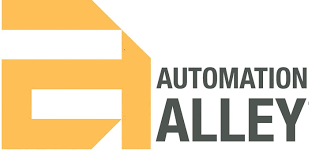Their discussion covers "Wired for Change: Electrification and the Future of Mobility"
Watch Tom and Chris discuss the latest Integr8 Roundtable, and the Playbook that has been developed from its findings, in the YouTube video shared below:
Chris had several questions for Tom:
Thanks for coming back on our show to talk about Automation Alley’s series of Integr8 playbooks. Your latest one is focused on the automotive industry’s transition to Electrification and Mobility – and we will get into that – but remind us again what this series of playbooks is?
· The 2024 Integr8 Roundtable Series is an invite-only roundtable sessions where leaders from industry, academia and government meet.
· Each roundtable is focused on a different topic or challenge related to the Industry 4.0 and the transition to digital manufacturing
· And then we publish a playbook from each roundtable that provides advice for manufacturers to help them overcome challenges
· It all builds momentum towards the Integr8 Roundtable Summit, to be held Oct. 3 in Detroit – which is now just around the corner…
Q. So much of the debate and discussion about the future of electric vehicles is about how fast the market is growing here in the U.S., but your report really makes it clear that this is the direction that the industry is going globally. Can you comment on that?
· Yes, that is absolutely true. More than 30 countries surpassed 5% EV adoption in 2024, a threshold historically indicating mass adoption. In the U.S., EVs constitute 8% of new auto sales, driven by technological advancements and decreasing costs.
Q. So, what are the implications of that?
· That means that here in the U.S., manufacturers that do business with global OEMs need to understand that this is a global transition and that we need to make sure manufactures in Michigan are helping automakers make that transition.
· While it’s true that car and trucks will internal combustion engines will still be around for many more years, that market will dimmish over time and you need to be able to support vehicles with both types of powertrains or you will eventually be left behind.
Q. I hear you but, certainly we have seen automakers adjust and even put major battery plants and EV assembly plants on hold – at least temporarily. Why do you think consumers have been reluctant to embrace them as fast as the industry expected?
· Well, I think if you go back a few years, one thing you heard a lot about was “range anxiety.” Now, you don’t hear that anymore. The technology has advanced and many EVs can go 300 miles or more on a full charge and sometimes more than 400 miles.
· However, the public charging infrastructure still isn’t there
· To some degree, we have transitioned from range anxiety to charging anxiety
· Now, that is changing – the U.S. charging infrastructure is growing – but until the public feels comfortable with it, mass adoption of EVs will continue to be slow.
· Meeting the Federal Government's goal of installing 500,000 stations and distributing them to the states with the most need by 2030 requires substantial funds and resources. To address some of the financial needs, the Department of Energy is offering several research and development grants for the improvement of electric batteries and charging stations.
Q. So, how do we solve these problems?
· Industry leaders must develop strategies focusing on market research, product knowledge, workforce skills, financial planning, supply chain management, and regulatory compliance. These strategies will help companies improve their market positions and address consumer demands effectively.
· Innovation and cross-industry collaboration are crucial for advancing EV technology and
addressing consumer concerns. Empowering employees, upskilling the workforce, and
encouraging collaboration among automakers, battery companies, and parts manufacturers will drive technological advancements.
Q. Some EVs on the market have eye-popping horsepower and acceleration – but achieving these numbers requires large batteries. This report suggests that there are some concerns about these products…
· Automakers need to strike a balance. They need to design and build cars, trucks and SUVs consumers want to buy…but they also need to remember why we started going down this road in the first place.
· The whole point of making the transition to EVs and other zero emission powertrains such as hydrogen fuel cell vehicles is to reduce the industry’s impact on the environment, respond to industry regulations and help to slow down climate change
· EV manufacturing, especially for batteries, does generate significant carbon emissions…
· So, reducing battery sizes, developing alternative chemistries, and improving recycling processes are key to sustainability. Cross-industry collaboration is necessary for more environmentally-friendly material extraction and sustainable practices
· Quote from the press release: “The sustainability of EVs hinges on the ethical sourcing and manufacturing of batteries, which require significant raw materials,” Kelly said. “Transparency in supply chains, government oversight, and public pressure are essential for maintaining ethical practices.”
Q. Do we also need to address our nation’s electric grid infrastructure?
· Yes…in the long run, without a reliable, and improved electric power grid, a full transition to EVs is not workable.
According to research published by Consumer Reports in May of 2023, “Americans drive approximately 2.9 trillion miles a year, and the average efficiency of the top 20 EVs is 3.1 miles per kilowatt hour. Dividing these two numbers, we find that if we were to instantly convert every passenger vehicle in the US to a battery electric vehicle, we would need to generate an additional 950 billion kilowatt hours of electricity per
year. If we divide that number by the 4.2 trillion kilowatt hours that are currently generated in the US, we find that electrifying the entire fleet would require a 22% increase in total electricity generation.
Q. What role and responsibility does government have in this transition?
· Under the Inflation Reduction Act adopted in 2022 by the Biden Administration the US federal government aims for half of all new vehicles sold by 2030 to be zero emissions, supported by a network of 500,000 chargers.
· Now, it has become clear that that’s a very ambitious goal…
· What we found in our report is that more than 50% of 6,000 of our LinkedIn followers who filled out a survey said they don’t think we will achieve that goal
· And, more than 73% said the automotive manufacturing supply chain “needs work.”
· So, what is clear is, investments in infrastructure, including equitable distribution of charging stations and federal grants for electric buses and worker training, are essential for widespread EV adoption.
About Automation Alley
Automation Alley is a nonprofit technology business association and Digital Transformation Insight Center focused on driving the growth and success of businesses in Michigan and beyond through innovation and automation. With a global outlook and a regional focus, we foster a vibrant community of innovators, entrepreneurs, and business leaders through opportunities for collaboration and learning. Our programs and services help businesses develop the skills and expertise needed to effectively jumpstart or accelerate digital transformation. By bringing together industry, academia, and government, we aim to create a dynamic ecosystem that drives innovation and growth across Michigan.
At Automation Alley, our mission is to help businesses thrive in the rapidly changing digital economy by equipping them with the knowledge, insights, and tools to develop a software-first mindset that leverages the power of automation, AI, and other cognitive technologies. We believe that by working together, we can build a stronger, more innovative, and more competitive economy for the future. Visit automationalley.com.
###











.jpg)







